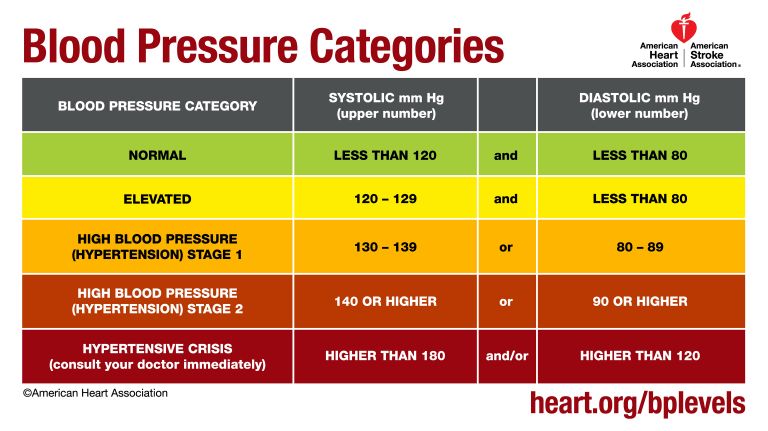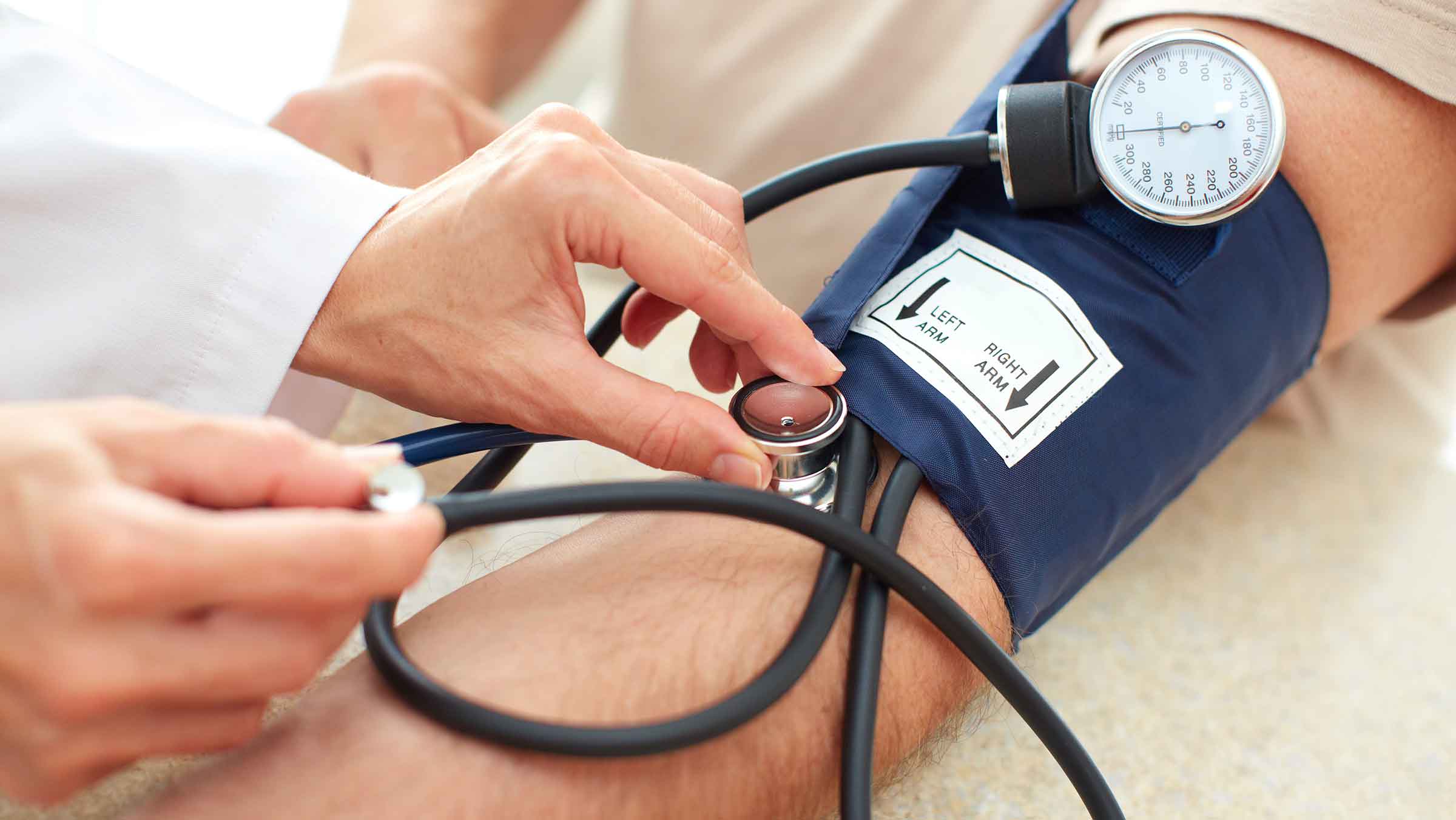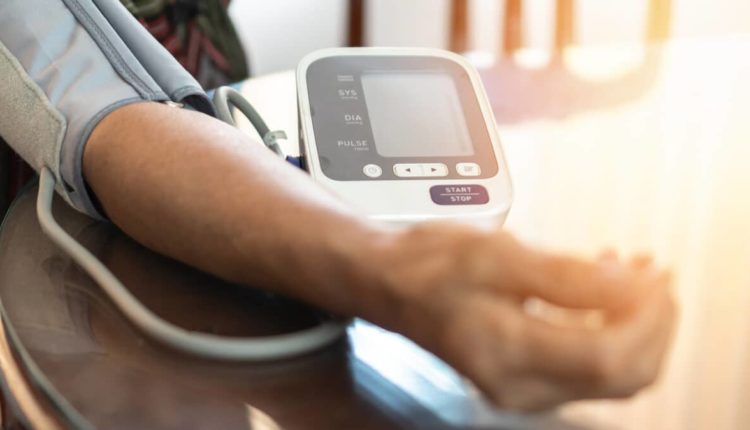Blood pressure and the heart-head connection
There’s a reason why your blood pressure is taken every time you visit a doctor’s office or hospital, regardless of the complaint that brought you there. High blood pressure is rightly known as “the silent killer.” It often carries no symptoms or warning signs but can drastically increase your risk of having a heart attack or stroke. The higher the number, the harder your heart is having to work to pump blood around your body and the more likely it is that damage is being done to the heart muscle. Since all parts of your body rely on circulation, though, it’s not just your heart that high blood pressure can impact. If blood doesn’t flow easily, it can harm your arteries as well as vital organs such as the kidneys, eyes, and brain.
High blood pressure (or “hypertension”) has been shown to damage the tiny blood vessels in the parts of your brain responsible for cognition and memory, greatly increasing your risk of developing Alzheimer’s disease or another dementia. Being diagnosed with cardiovascular disease can also take an emotional toll, affecting your outlook and making you more susceptible to anxiety and depression. And just as blood pressure may have an impact your mood, the reverse can also be true:
- Stress can increase the body’s production of hormones such as adrenaline and cortisol which in turn raises blood pressure.
- Self-medicating your mood with alcohol, nicotine, junk food, or recreational drugs can also elevate your blood pressure.
- Even isolating yourself from family and friends—a common symptom of depression and anxiety—can push your blood pressure higher and damage your cardiovascular health.
- High blood pressure and common mental health problems can often be attributed, at least in part, to the same unhealthy lifestyle factors, such as overwhelming stress, poor diet, and a lack of exercise. Changing your lifestyle to address high blood pressure can help to improve your mental health—and vice versa.
Since new guidelines released in 2023 lowered the threshold for what should be considered high blood pressure, more and more of us find ourselves at risk. In fact, nearly half of adults in the United States have high blood pressure. While hypertension is very common, the good news is that it’s also very easy to rectify. In many cases, simple lifestyle changes can have a huge impact on your numbers and help protect both your heart and brain health.
Measuring blood pressure
Blood pressure is measured as millimeters of mercury (mm Hg)—a holdover from the traditional mercury gauges used by the medical industry—and has two components:
- The higher number, or systolic blood pressure, is measured as your heart pumps blood into your arteries.
- The lower number, or diastolic blood pressure, is measured as your heart relaxes between beats.
The systolic number is recorded first, with an ideal blood pressure reading being below 120/80 (expressed as “120 over 80”). The American Heart Association and American College of Cardiology define high blood pressure, or hypertension, as 130/80 or above (a systolic reading of at least 130 mm Hg or a diastolic reading of at least 80 mm Hg, or both).

Monitoring your numbers
Your blood pressure fluctuates throughout the day, with lots of ups and downs. It will typically spike if you’re exercising or running late for a meeting, for example, and drop when you’re sleeping or relaxing with loved ones. Since blood pressure can vary so much, if you’ve been diagnosed with hypertension you may want to monitor your blood pressure at home.
Choose a home blood pressure monitor that wraps around your upper arm. They tend to be more accurate than those that work on your wrist or finger.
Don’t drink caffeine or smoke for at least 30 minutes before measuring your blood pressure. Sit quietly in a chair for a few minutes before measuring, then make sure your arm is supported and your elbow is at about heart level as you run the test.
Small changes can make a big difference. According to a Harvard study, having hypertension can increase your risk of stroke by 220%. On the flip side, reducing your systolic blood pressure by 10 mm Hg can cut your risk of stroke by as much as 44%.
If you have low blood pressure …
Low blood pressure (known as “hypotension”) is a much less common problem than hypertension, but it can still significantly impact blood flow to the brain and increase your risk of shock, stroke, heart attack, and kidney failure.
There is no specific reading that determines when blood pressure is too low. Rather, doctors rely on the presence of symptoms such as dizziness, fainting, blurred vision, and unsteadiness when standing to diagnose hypotension.
If you experience such symptoms, your doctor will look for underlying causes such as medication side effects, nutritional deficiencies, or a heart issue. Aside from a low-sodium diet, many of the same lifestyle changes used to treat high blood pressure can also be effective for managing low blood pressure.
Causes of high blood pressure
There’s no single cause of high blood pressure, but rather many contributing factors. Some are out of your control, such as age, race, gender, and family history—blood pressure tends to increase over the age of 70, affects more women than men over the age of 55, and is more common in African Americans than Caucasians, perhaps due to a genetic sensitivity to salt.
Many other risk factors for hypertension are within your control. Being overweight, eating a poor diet high in salt, smoking, drinking excessively, and not getting enough physical exercise can all impact your blood pressure.
There are also specific substances that can raise your blood pressure, such as:
- Caffeine, including coffee, tea, soda, and energy drinks.
- Prescription medications, including some of those used to treat ADHD, birth control pills, corticosteroids, atypical antipsychotics, MAOIs and SNRIs used to treat depression, and some cancer drugs.
- Nonsteroidal anti-inflammatory drugs (NSAIDs), such as aspirin and ibuprofen (Motrin, Advil).
- Cough and cold medications containing decongestant or NSAIDs.
- Herbal supplements, such as ephedra and yohimbine.
- Recreational drugs, such as cocaine and methamphetamine.
- Licorice found in some candies and gum.
Can anxiety cause high blood pressure?
Short bouts of anxiety can raise your blood pressure, as your body’s “fight or flight” response kicks in. This is usually temporary, and your blood pressure decreases once the stress has passed.
However, it’s also possible that chronic, persistent anxiety can contribute to high blood pressure. Some research shows a link between the two conditions, although not all experts agree.
It could be how people seek relief from their anxiety that results in hypertension, rather than the anxiety itself. For example, if you smoke or consume a lot of alcohol to ease anxiety, it could lead to high blood pressure. Or having an anxiety disorder can disrupt your sleep, which in turn raises your risk for hypertension.
Whatever the cause of your high blood pressure, making healthy lifestyle changes can help manage the issue, and protect your heart and brain health.

5 steps to lowering your blood pressure
The first line of treatment for high blood pressure is to make healthy lifestyle changes:
While lifestyle changes can be critical to improving heart health, if those changes alone aren’t enough, it’s also important to take any hypertension medications your doctor recommends.
Step 1: Get active
As with the other muscles in your body, your heart will get stronger when you exercise regularly. That means your heart will be able to pump blood around your body more efficiently. Regular aerobic activity can also help improve your cholesterol levels.
If you have been diagnosed with heart disease or another serious health problem, consult your doctor before starting an exercise program. Otherwise, to reap the heart and brain benefits of exercise, aim for:
- At least 150 minutes (2.5 hours) of moderate-intensity aerobic activity per week, such as walking briskly. That’s 30 minutes a day for five days a week, broken down into 10- or 15-minute bursts if that’s easier. Moderate intensity means that you’re able to speak in full sentences as you move, but not sing.
- Or 75 minutes of vigorous-intensity aerobic exercise per week will deliver similar benefits if your fitness level allows you to work out harder. That means running for 15 minutes on five days each week instead of walking briskly for 30 minutes. Vigorous intensity means that you are too breathless to speak in full sentences as you move.
Step 2: Eat a heart-healthy diet
The foods you eat can have a major impact on your blood pressure, not to mention your heart and brain health. Rather than focusing on specific foods, though, it’s your pattern of eating that’s most important. Instead of processed food, packaged meals, and sugary snacks, a heart-healthy diet is built around “real,” natural food.
A number of different diet plans can help in controlling blood pressure, but they all feature a reduction in salt, alcohol, and refined carbohydrates, and an increase in fruit and vegetables.
The DASH diet (Dietary Approaches to Stop Hypertension) is a specially designed eating plan to help you lower your blood pressure. When combined with a reduction in salt, the DASH diet can even be more effective at lowering blood pressure than medication. See “Get more help” below for resources.
The Mediterranean diet emphasizes eating lots of fresh fruit and vegetables, nuts, fish, and olive oil—and only modest amounts of meat and cheese. Following a Mediterranean diet limits your intake of refined breads, processed foods, and red meat—all factors that can help lower your blood pressure and prevent heart disease and stroke.
Limit your alcohol consumption. Drinking as little as one or two alcoholic beverages can cause a temporary spike in your blood pressure. But drinking excessively over time can greatly increase your risk of hypertension, stroke, and heart disease. Alcohol consumption can also interfere with some blood pressure medications.
Increase your potassium intake from food. Potassium can help your body get rid of excess sodium and relax blood vessels, thus helping to lower blood pressure. Bananas, oranges, broccoli, and spinach are all high in potassium.
Step 3: Lose weight
Carrying extra weight forces your heart to work harder circulating blood around your body, raising your blood pressure. The more weight you’re carrying, the greater the risk of hypertension.
The good news is that shedding pounds can have a marked impact on blood pressure. Losing just 10 pounds could reduce your systolic blood pressure by as much as 10 mm Hg.
Of course, as anyone who’s ever tried to lose weight knows, there’s no easy fix for dropping pounds. Since our bodies are different and we respond differently to different foods, what works for one person may not necessarily work for you. To find the most effective weight loss method may take some time and experimentation with different foods and different diets.
It’s also true that many of us don’t always eat simply to satisfy our hunger. We turn to food when we’re stressed, anxious, bored, or lonely, which can wreck any diet. Recognizing your emotional eating triggers and finding healthier ways to deal with stress can make all the difference to achieving a healthy weight.
Step 4: Manage stress
In today’s hectic world, many of us find ourselves constantly feeling frazzled and overwhelmed. While not all stress is bad for you, persistent and chronic stress can take a toll on your blood pressure and heart health. In addition to exercise and diet, there are lots of ways you can help combat stress and bring your body and mind back into balance.
Adopt a relaxation practice. Practicing a relaxation technique, such as mindfulness meditation, progressive muscle relaxation, or deep breathing can elicit the relaxation response, a state of deep rest that puts the brakes on stress, slows your breathing and heart rate, and lowers your blood pressure.
Talk to a trusted friend. Nothing eases stress more effectively than chatting face-to-face with a friend or loved one. Make time to connect with the people closest to you.
Get enough sleep. A lack of sleep can exacerbate stress just as stress can make it harder to get a good night’s sleep. You can break the cycle and ensure you get enough quality sleep at night by modifying your daytime habits and developing a peaceful bedtime routine.
Step 5: Quit smoking
The nicotine in tobacco causes your body to release adrenaline that stimulates your nervous system and forces your heart to work harder to circulate blood. This increases your heart rate and blood pressure—not just while you’re smoking, vaping, or chewing tobacco, but for some time afterwards as well. Nicotine can also interfere with certain blood pressure medications.
While quitting is never easy, once you stop your body will benefit from improved circulation almost immediately. To successfully kick the habit, you’ll need to address both the addiction and the habits and routines that go along with it. But it can be done. With the right support and quit plan, any smoker can kick the addiction—even if you’ve tried and failed multiple times before.
- Advertisement -

